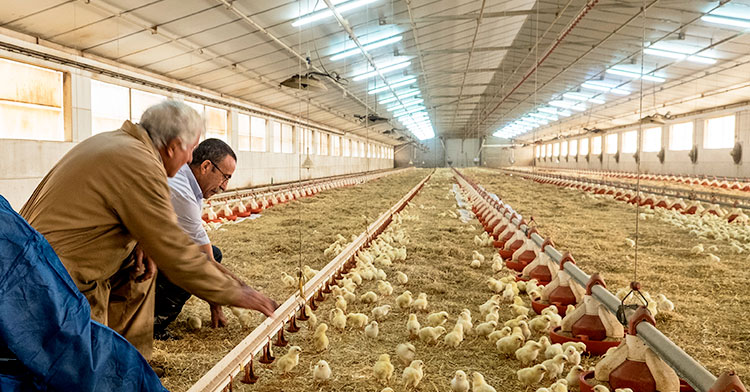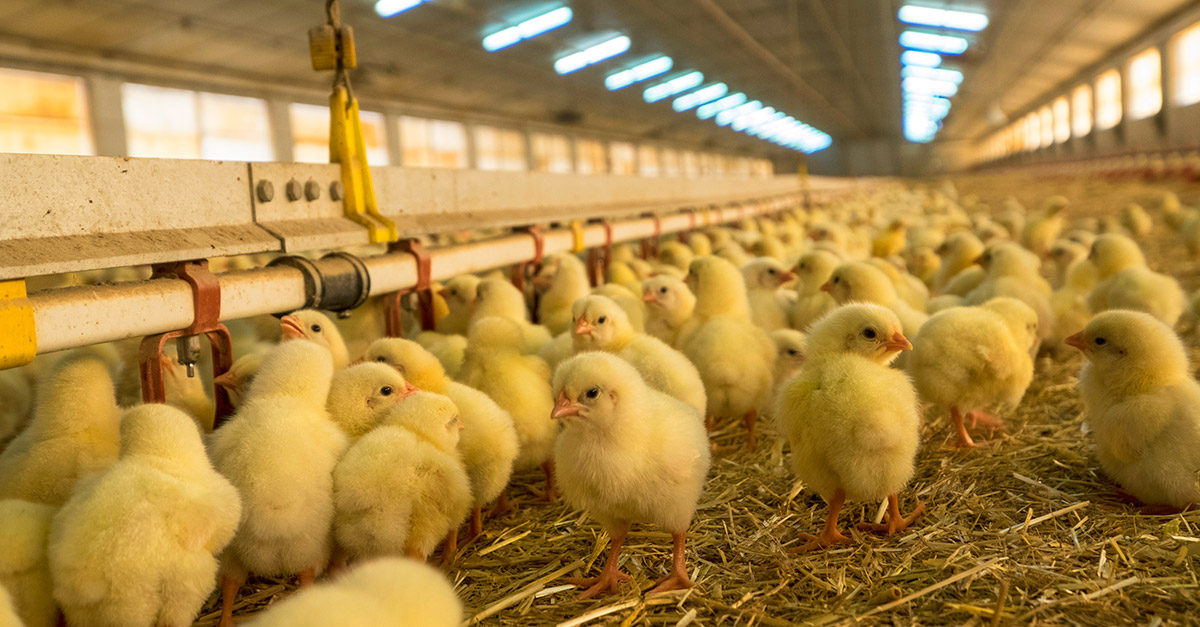Non-attenuated & attenuated coccidiosis vaccines
Coccidiosis remains a significant challenge for poultry producers, impacting both long- and short-lived birds. While chemoprophylaxis is being more and more contested due to the appearance of resistances and the One Health Approach, the use of vaccination strategies is becoming an increasing trend.
However, not all coccidiosis vaccines are based on the same technology. Therefore, a proper understanding of the subject is crucial for a correct decision-making regarding the best strategy to be implemented. Many comprehensive reviews on this topic have been published (Atree et al., 2021; Shirley et al., 2006).
First-generation (early 50’s) vaccines are comprising wild-type isolates of Eimeria (Non-attenuated strains). However, as wild-type strains, they behave as wild strains posing a high risk of reduced performance and disease triggered by vaccinal strains (Shirley et al., 2006). Although such vaccines are still present in many countries, many governments are tightening legislation to ensure only balanced products are available.
Second-generation (from 90’s) vaccines comprise attenuated isolates of Eimeria with a reduced reproductive capacity, but comparable immunogenicity to wild-type vaccines. Attenuation by serial passages in the chorioallantoic membrane of embryonated eggs has been developed, but the more prevalent method is attenuation by precociousness, as explained in previous blogs and by various authors (McDonald et al., 2009; Jeffers 1975).
Clarifications of coccidiosis vaccines
Surfing the web, is easy to find several publications about avian coccidiosis. And, despite authors can have different points of view, there are some statements that can confuse the poultry producers and veterinarians. Some examples to clarify from one of these publications:
1. Can coccidiosis vaccines be classified as “Full cycle” or “Short cycle”?
No, as Eimeria strains contained in both kind of vaccines (wild and attenuated) must accomplish a full cycle to create protection. The most common classification by scientists and experts in the poultry Eimeria field is between “Live and live attenuated vaccines”, also known as “Non-attenuated and attenuated vaccines” respectively. Also, is common to classify them in “Wild-type isolates of Eimeria oocysts or Attenuated lines of Eimeria oocysts” (Soutter et al., 2020 ; Chapman H.D, 2014).
2. Can coccidiosis vaccines be differentiated or classified depending on the amount of oocyst per dose (OPD) that they contain (high or low OPD)?
No. In fact, in many cases the OPD of many commercially available coccidiosis vaccines is not an accessible information for the poultry producers and veterinarians in order to classify each vaccine in each category.
3. Does the post-vaccination reaction in “Full cycle (non-attenuated vaccines) depend on the initial number of OPD, the vaccine age (shelf-life), and field management”?
Yes. However, is important to highlight that non-attenuated vaccines can pose a significant risk when accumulating high levels of vaccinal oocysts within chicken house litter, resulting in high levels of exposure and clinical disease, even mortality, necessitating the use of anticoccidial drugs following vaccination (Soutter et al., 2020).
4. Do the ”Non-attenuated strains rapidly “seed” the environment and displace field-resistant ones due to their optimum reproductive capacity (Snyder et al. 2021).”?
Yes, but this is not a differential point vs attenuated strains. Attenuated by precociousness strains can also displace rapidly field-resistant strains, reinforcing the importance of understanding the nuances of different coccidiosis vaccine technologies.
5. Are attenuated by precociousness strains able to produce “Less gut lesions, reduced parasite fecundity and oocyst output compared to “Full cycle” (non-attenuated) strains, due to the fewer asexual generations.”?
Yes. Clearly, this is the goal with these strains, to reduce the gut lesions while maintaining the capacity to build immunity against coccidiosis (Soutter et al., 2020).
6. Is it real that “The lower oocyst (of attenuated by precociousness vaccines) output may slow the onset of immunity under field conditions, impacting flock uniformity and protection against challenge.”?
No, in fact the onset of immunity for attenuated vaccines is similar to non-attenuated vaccines being adequate and prior to the field challenge , both in experimental and field conditions, as described in several publications (McDonald et al., 1983; Shirley et al., 1997).
7. Do “Short cycle” (attenuated) vaccines demand extra attention regarding field management to promote vaccine cycling and the development of immunity.”?
No, as both kind of vaccines demand some sort of post-vaccination management to ensure a proper replication of vaccinal strains and a consequent performance. In fact, in the case of wild-type vaccines, field management is very important to avoid over-replication and coccidiosis outbreaks in the flocks.
Attenuated by precociousness coccidiosis vaccines, a clear approach
In conclusion, attenuated by precociousness Eimeria vaccines emerge as a balanced option in coccidiosis prevention in the poultry industry, for both breeders, layers and broilers. Their ability to generate a rapid immune response, their safety, the lasting protection they provide, and their economic efficiency position them as optimum tools in poultry health management. By adopting these innovative vaccines, poultry producers can strengthen their operations and ensure the ongoing health and well-being of their flocks.
References
- Attree E, Sanchez-Arsuaga G, Jones M, Xia D, Marugan-Hernandez V, Blake D, Tomley F. Controlling the causative agents of coccidiosis in domestic chickens; an eye on the past and considerations for the future. CABI Agric Biosci. 2021;2(1):37. doi: 10.1186/s43170-021-00056-5. Epub 2021 Sep 27. PMID: 34604790; PMCID: PMC8475900.
- H.D. Chapman (2000) Practical use of vaccines for the control of coccidiosis in the chicken, World’s Poultry Science Journal, 56:1, 7-20, DOI: 10.1079/WPS20000002
- Chapman HD, Barta JR, Blake D, Gruber A, Jenkins M, Smith NC, Suo X, Tomley FM. A selective review of advances in coccidiosis research. Adv Parasitol. 2013;83:93-171. doi: 10.1016/B978-0-12-407705-8.00002-1. PMID: 23876872.
- Chapman HD. Milestones in avian coccidiosis research: a review. Poult Sci. 2014 Mar;93(3):501-11. doi: 10.3382/ps.2013-03634. PMID: 24604841.
- Jeffers TK. Attenuation of Eimeria tenella through selection for precociousness. J Parasitol. 1975 Dec;61(6):1083-90. PMID: 1195070.
- McDonald V, Ballingall S. Further investigation of the pathogenicity, immunogenicity and stability of precocious Eimeria acervulina. Parasitology. 1983 Jun;86 (Pt 3):361-9. doi: 10.1017/s0031182000050551. PMID: 6877863.
- McDonald V, Shirley MW. Past and future: vaccination against Eimeria. Parasitology. 2009 Oct;136(12):1477-89. doi: 10.1017/S0031182009006349. Epub 2009 Jun 15. PMID: 19523251.
- Shirley MW, Bedrník P. Live attenuated vaccines against avian coccidiosis: Success with precocious and egg-adapted lines of Eimeria. Parasitol Today. 1997 Dec;13(12):481-4. doi: 10.1016/s0169-4758(97)01153-8. PMID: 15275137.
- Soutter F, Werling D, Tomley FM, Blake DP. Poultry Coccidiosis: Design and Interpretation of Vaccine Studies. Front Vet Sci. 2020 Feb 26;7:101. doi: 10.3389/fvets.2020.00101. PMID: 32175341; PMCID: PMC7054285.
- Williams RB. Fifty years of anticoccidial vaccines for poultry (1952-2002). Avian Dis. 2002 Oct-Dec;46(4):775-802. doi: 10.1637/0005-2086(2002)046[0775:FYOAVF]2.0.CO;2. PMID: 12495038.





